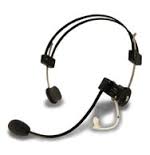Communication cables transmit information signals to and from separated points. These cables include coaxial conductors and optical fibers which are transmission mediums. Structures of the communication cable will depend on the application it’s being applied to. It protects the cable against the external environment and forces. 
Telegraphy lines were earlier used for communication cables. These were known as SWER or Single Wire Earth Return circuits, they were un-insulated and used in Single Wire Transmissions. Over time these forms of communication cables started having noise from devices that use electricity and electric trains. Companies then switched to balanced circuits lines, using two wires with circuits installed at every distance and at the receiving/transmitting ends to cancel the interference out.
There are many types of communication cables today. The common types available are serial, RJ45 and RJ11. Serial communication cables are used to transmit information between two devices that uses a serial communication protocol. They are generally used for RS-232 communication. RJ11 are similar to RJ45, especially when looking at them, however RJ11 cables are wired for two lines.
You’ll find telephone cords with modular plugs are intended for RJ11 cables. They have a small compact shape with 6 pins to three copper pairs and used for analog and voice. It should be noted that RJ11 cables do not require certifications. RJ45 cables are more rectangular and longer than RJ11. Instead of 6 pins it comes with eight pins and eight connectors also known as 8P8C and are used for Ethernet and data network. Also unlike RJ11 cables RJ45’s do require certification on many levels such as CAT3, CAT5e and CAT6.
Communication cables prevent interference and interception better than wireless communications mechanism. They send and receive telephone conversations, photographic images, computer data, etc. With communication cables, they remove the need for electricity to power them up and for wireless transmitters.
Also see: Automotive Industry, Medical Industry, Telecommunications, Military & Aerospace
